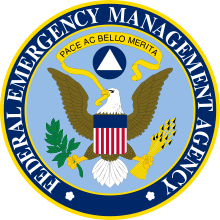COURT HOUSE – Foraging for food in the wild has been the backbone of human and animal survival since time immemorial. In many cultures, foraging is a generations-long tradition still being enjoyed.
Across the United States, there has been a resurgence of interest in gathering herbs, greens, mushrooms and other edibles to augment what can be purchased, already harvested by supermarkets and other suppliers or by chefs seeking new delicacies to entice customers.
Cape May County is home to thousands of acres of protected pinelands primarily in Upper and Dennis townships. The area is also home to naturally grown blueberries, cranberries and other important edibles.
Nevertheless, foraging has not had quite the renaissance in the county as seen in other parts of the country or even in locations as close by as Deptford and the urban environs of Philadelphia’s Wissahickon Valley and New York City’s Central Park.
Those who go into the forests and meadows to find things to eat are not usually motivated out of necessity, as in the past. Instead, they do it more to reconnect with their natural roots with Mother Earth and the environment.
Those incentives are coupled with an interest in consuming what is most nutritious and fresh along with popular interest in eating as close to the source as possible and to decouple from the stress of daily life.
Other benefits include learning about the connection of food in the wild with local history and ancestors.
Jared Rosenbaum, a recognized grower, and steward of native plants says, “Foraging reconnects us to the way in which we humans related to plants for most of our existence as a species. Deeply aware of plants, sensually attuned to their appearance, habitat, and needs, and dependent on them for food and medicine. I think the move towards ‘take only photographs, leave only footprints,’ while admirable, has only further alienated us from plants.
“There are many examples of how foraging by Native Americans not only provided for people’s needs, but also supported plant communities (two references being “Tending the Wild” by M. Kat Anderson, and “Braiding Sweetgrass” by Robin Kimmerer).
“I feel that the future of plant conservation (and stewardship), lies in an interdependent, reciprocal relationship where plants support us, and we value and protect wild plants. That said… there are lots of humans on the planet, in some areas way more than existing populations of wild plants can sustain.
“It’s painful when a wild plant becomes faddish (like ramps, ramsons or wild leeks, which take at least seven years to grow to harvestable size from a seed) and becomes over harvested in the wild so that people in gourmet restaurants can experience some novelty.
“So: foraging is a great practice to bring individuals closer to the wild world, but it can have serious consequences when it is absorbed into a commodity economy (where, as usual, people don’t know where their food comes from or what it looks like).”
According to websites of naturalists who lead foraging groups elsewhere in the state, it is important to tackle the misunderstanding that foraging is dangerous or environmentally detrimental. That can be accomplished through education. People need to be taught to recognize what is and is not poisonous.
N.J. Mycological Association, per its website, holds “forays,” or walks in forests including Belleplain in the county to gather mushrooms solely for identification purposes.
The association stresses that most of its foray locations “require a permit to collect fungi for scientific purposes, to educate the public about fungi and identify what we find. Our permits do not allow us to pick for eating, so please do not put our ability to collect in these areas into jeopardy.”
Caryn Shinske, of the public affairs office of the N.J. Department of Environmental Protection (DEP), emphasized as well, “It is not permissible to forage for food, ornamental plants or trees in New Jersey state parks lands and doing so may result in a fine, according to Administrative Code 7:2-2.10(a).
“DEP has a responsibility to protect our state-owned lands for this and for future generations. Therefore, the state prohibits removal of any vegetation without approval and this would include people looking to forage for food,” said Shinske.
But, since edibles in the wild are not only found in public parks but also on people’s own lawns or in their backyards, the permitting process should not be an impediment to finding food to eat in the wild.
The common dandelion (Taraxacum officinale) which most homeowners struggle to eradicate can be a delicious addition to salads or steamed as any green, as well as other so-called weeds which actually have given vitamin- rich sustenance for eons.
There are other locations to try one’s hand at foraging in the “built environment” as well, and finds could include cattails, wild raspberries, acorns, arrowhead plant, pawpaws and persimmons.
Along the shore and adjacent areas in the county, beach plums, prickly pear cactus and bayberry abound.
Many believe that foraging, especially in urban areas; can offset the dearth of fresh and nutritious food in low-income “food deserts” where it is difficult to find healthy produce.
As well, many locations are finding that foraging is a welcome addition to efforts to promote eco-tourism and attract visitors, including international tourists.
To contact Camille Sailer, email csailer@cmcherald.com.


 $28M Sports Complex Proposed for Site Across From Zoo
$28M Sports Complex Proposed for Site Across From Zoo
 Employees Put on Leave After Criticizing FEMA Plans
Employees Put on Leave After Criticizing FEMA Plans
 Ax-Wielding Man Faces Attempted Murder Charges
Ax-Wielding Man Faces Attempted Murder Charges





